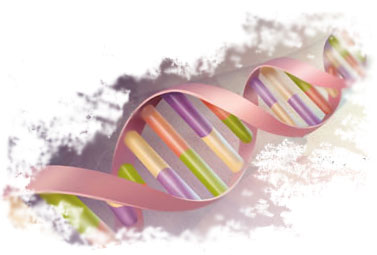What is Genetics?
By Dr Ananya Mandal, MD
Genetics is the study of heredity. Heredity is a biological process where a parent passes certain genes onto their children or offspring. Every child inherits genes from both of their biological parents and these genes in turn express specific traits. Some of these traits may be physical for example hair and eye color and skin color etc. On the other hand some genes may also carry the risk of certain diseases and disorders that may pass on from parents to their offspring.

Genes in the cell
The genetic information lies within the cell nucleus of each living cell in the body. The information can be considered to be retained in a book for example. Part of this book with the genetic information comes from the father while the other part comes from the mother.
Chromosomes
The genes lie within the chromosomes. Humans have 23 pairs of these small thread-like structures in the nucleus of their cells. 23 or half of the total 46 comes from the mother while the other 23 comes from the father.
The chromosomes contain genes just like pages of a book. Some chromosomes may carry thousands of important genes while some may carry only a few. The chromosomes, and therefore the genes, are made up of the chemical substance calledDNA (DeoxyriboNucleic Acid). The chromosomes are very long thin strands of DNA, coiled up tightly.
At one point along their length, each chromosome has a constriction, called the centromere. The centromere divides the chromosomes into two ‘arms’: a long arm and a short arm. Chromosomes are numbered from 1 to 22 and these are common for both sexes and called autosomes. There are also two chromosomes that have been given the letters X and Y and termed sex chromosomes. The X chromosome is much larger than the Y chromosome.
Chemical bases
The genes are further made up of unique codes of chemical bases comprising of A, T, C and G (Adenine, Thymine, Cytosine and Guanine). These chemical bases make up combinations with permutations and combinations. These are akin to the words on a page.
These chemical bases are part of the DNA. The words when stringed together act as the blueprints that tells the cells of the body when and how to grow, mature and perform various functions. With age the genes may be affected and may develop faults and damages due to environmental and endogenous toxins.
Males and females
Women have 46 chromosomes (44 autosomes plus two copies of the X chromosome) in their body cells. They have half of this or 22 autosomes plus an X chromosome in their egg cells.
Men have 46 chromosomes (44 autosomes plus an X and a Y chromosome) in their body cells and have half of these 22 autosomes plus an X or Y chromosome in their spermcells.
When the egg joins with the sperm, the resultant baby has 46 chromosomes (with either an XX in a female baby or XY in a male baby).
Genes and genetics
Each gene is a piece of genetic information. All the DNA in the cell makes up for the human genome. There are about 20,000 genes located on one of the 23 chromosomepairs found in the nucleus.
To date, about 12,800 genes have been mapped to specific locations (loci) on each of the chromosomes. This database was begun as part of the Human Genome Project. The project was officially completed in April 2003 but the exact number of genes in the human genome is still unknown.
Comments
Post a Comment
Nice article